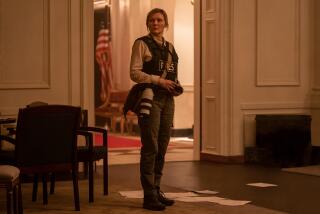Personal politics: Coburn’s last film
- Share via
James Coburn, who died Monday, achieved stardom in the 1960s in such popular studio films as “The Magnificent Seven,” “The Great Escape” and “Our Man Flint.” In a career that spanned nearly five decades, he amassed more than 100 film and television credits, culminating in his Academy Award-winning performance in “Affliction” (1997).
His final film, the as-yet-unreleased independent production “American Gun,” was a very different kind of project -- more personal and political. The film stars Coburn as a man who sets out to track the provenance of the handgun whose use resulted in a family tragedy. His quest takes him across the country and includes visits to the factory where the gun was made and flashback sequences depicting the weapon’s past owners.
Written and directed by Alan Jacobs (“Just One Night,” “Nina Takes a Lover”), “American Gun” was shot in early 2001 on location in Vermont, Florida, Las Vegas and Los Angeles, on a budget that Jacobs wryly noted was “less than the average house in Beverly Hills.”
In an interview after Coburn’s death, Jacobs recalled the actor as straightforward and remarkably amenable to the project’s small-scale production considerations. “We took him all around the country,” Jacobs said. “He was so good about it. We had him in Vermont for a month in the winter, then down to Florida. He was in four states for the better part of 40 days, making this low-budget film.”
And despite the painful arthritis that had severely inhibited Coburn’s activities in recent years, Jacobs noted, “You needed him to walk, he walked.”
When it came time to screen the finished film for distributors, Coburn again stepped up to the plate. “He came out for two of the screenings we did here in L.A.,” Jacobs said. “He also made calls to a couple of the film festival directors, and he put in a call to some prospective buyers. Whenever we needed him to make a call, he was there.”
“American Gun” carefully balances the points of view it presents on the volatile issue of handguns. . In some ways, though, it could serve as a companion piece to Michael Moore’s “Bowling for Columbine,” an acerbic documentary look at the American gun culture. (Currently in theaters, “Bowling” recently became the most successful non-concert documentary ever released.)
Jacobs became friendly with a number of National Rifle Assn. members while developing his story -- several appear in small roles in the film -- and went through the process of applying to buy a gun as part of his research. However, while waiting for his background check to clear, Jacobs realized he had no safe place to keep the gun in his home, where he lives with his wife and their four young children. Once he was notified that he could pick up the gun, he never followed through with the purchase.
The first public screening of “American Gun” was at the Seattle International Film Festival in June. The movie was shown again, in New York at the Hamptons International Film Festival in October, where Coburn was given a career achievement award. The actor had originally planned to travel to both festivals but was not well enough for either trip. He was recovering at home from foot surgery for his arthritis when he suffered a fatal heart attack.
Before Coburn’s death, Jacobs was in conversation with “a couple of potential distributors” and hoping for a theatrical release early next year. The writer-director is keenly aware of the unfortunate irony that now surrounds his film.
“It makes everything the opposite of what it was yesterday,” he said, sadly acknowledging that “two days ago I had a film that had a shelf life; now I have a film that will always be James Coburn’s last movie.”
More to Read
Only good movies
Get the Indie Focus newsletter, Mark Olsen's weekly guide to the world of cinema.
You may occasionally receive promotional content from the Los Angeles Times.










